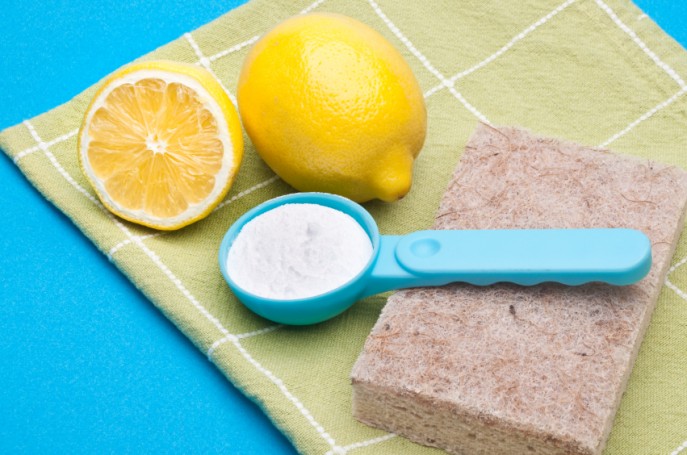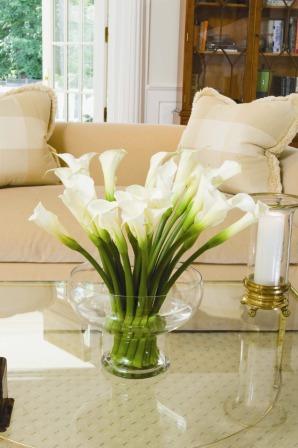Which of these products would you like to add to your home for a spring time fresh feel and smell?
• Alkylphenol ethoxylates
• Ammonia
• Chlorine
• Lye
• Formaldehyde and petroleum solvents
• Synthetic fragrance
The ingredients listed above are in most conventional cleaning products, and rather than cleaning your home, actually pollute it with a toxic mixture of petrochemicals. Synthetic fragrances are added to mask the odor of chemical vapors, implicated in headaches, dizziness, skin rashes and respiratory problems.
It’s easy, and healthier, to choose products that are readily available on your pantry shelves or at your grocery store to get your home sparkling clean and ready for spring.

Here’s what you’ll need:
• Baking soda
• Borax
• Hydrogen peroxide
• Kosher salt
• Lemon
• Olive oil or jojoba oil
• Rubbing alcohol
• Vodka
• White vinegar
This list not only sounds better; these items actually clean your home and leave no chemical residue behind. Here’s a guide to cleaning even the toughest messes in a healthy way:
Kitchen: Try baking soda sprinkled on counters, tabletops, sinks, refrigerators and cutting boards; use a damp sponge to scrub lightly and rinse. If you need more abrasive action, add a little kosher salt. For stains and greasy spills, you can add lemon juice or vinegar. Vinegar kills most mold, bacteria and germs, and lemon juice has antibacterial and antiseptic qualities, plus it is a natural bleach.
For marble, granite or stone countertops, use rubbing alcohol or vodka instead of vinegar for cleaning.
Your oven can be cleaned with a paste of baking soda and water; apply it with a damp sponge and let it sit overnight. In the morning, wipe clean. For greasy ovens, you can add ½ cup washing soda (sodium carbonate) and white vinegar.
Freshen the air in the kitchen by simmering a potpourri of cinnamon sticks and cloves on the stovetop.
Bathroom: Baking soda and vinegar will clean your sinks, showers, tubs and tile. If you like, add a little lemon juice for a fresh scent.
To clean grout, mix a half a cup of hydrogen peroxide with one cup of water. Spray it on the grout, let it sit for one hour, then rinse.
To clean the toilet, use one quarter cup of baking soda with one cup of vinegar. Pour it into the bowl, let it sit for a few minutes, then scrub and flush.
Wood Furniture Cleaner: Make a natural furniture polish from ¼ cup white vinegar with 1 tablespoon of olive or jojoba oil. Or you can mix two parts olive oil with one part lemon juice.
Glass Cleaner: Mix ¼ cup white vinegar or 1 tablespoon lemon juice with 2 cups water. You can add 3 to 4 drops of liquid soap, but it’s not necessary. Spray on glass and mirrors, and wipe off using old newspapers for a fabulous shine.
Floor Cleaner: Mix ½ cup Borax with 1 gallon hot water. For hardwood floors, try a gentler mix of ¼ cup white vinegar and 30 ounces of warm water. Put it in a recycled spray bottle, then spray on a cotton rag until lightly damp. Use the rag to wipe your floors clean.
Carpet Cleaner: Sprinkle your carpets with baking soda before vacuuming to deodorize; to clean stains, mix equal parts borax or baking soda with salt and white vinegar. Apply the paste to the rug, let dry, then vacuum.

The March/April issue of Natural Home Magazine has a wonderful article with more tips on homemade cleaning supplies and tips for a healthy home.
As an alternative, good commercial products are made by Seventh Generation. Located in Burlington, Vermont, this socially responsible company has been making non-toxic cleaning products for twenty years.
Remember to open the windows and let the fresh breezes flow through the house. Add a good air filtration system, and you’ve made a great start on living in a healthier home!
living room photo courtesy of Erik Rank; daffodil photo courtesy of Stacy Bass








